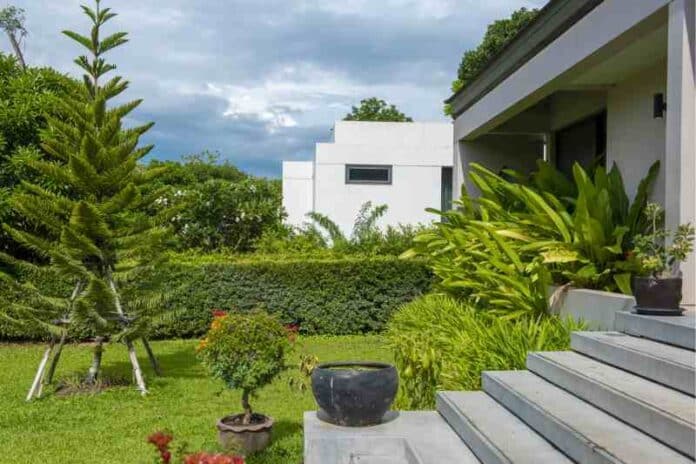
Small-space landscaping presents unique challenges and opportunities for homeowners who want to transform limited outdoor areas into functional and aesthetically pleasing extensions of their homes.
Whether you have a tiny urban balcony, a compact courtyard, or a small suburban backyard, there are numerous creative and practical ways to make the most of your limited outdoor space.
In this comprehensive guide, we will explore essential tips and strategies for small space landscaping, helping you maximize your space’s potential.
Plan and Prioritize
Before you embark on your small space landscaping project, it’s crucial to create a well-thought-out plan. Start by defining your goals and priorities for the space.
Do you want a cozy relaxation area, a vibrant garden, or a combination of both? Consider the specific needs and preferences of your household, such as outdoor dining, play areas for children, or a space for pets. By having a clear vision, you can make efficient use of your limited space and avoid costly mistakes.
The Right Plants and Zones
Selecting the right plants is essential for small-space landscaping. Opt for compact and dwarf varieties that won’t overwhelm your limited space. Consider container gardening, which allows you to control the size and placement of your plants.
In addition, choose plants that thrive in your specific climate and conditions, as this will reduce the need for extensive maintenance. Divide your small outdoor space into functional zones to maximize its utility.
For example, designate one area for dining, another for relaxation, and a third for gardening. Clearly defined zones help organize the space and make it feel larger. Use hardscaping elements like pavers, gravel, or decking to separate these areas.
Go Minimalist
In small-space landscaping, less is often more. Embrace a minimalist design philosophy by keeping the elements clean, simple, and uncluttered. Avoid overdecorating or overcrowding the space with too many plants or decorations.
A minimalist approach will create a sense of openness and tranquility. Consider using portable features in your small space landscaping. This allows you to change the layout and arrangement as needed. Portable elements may include movable planters, lightweight furniture, and flexible shade solutions like umbrellas or retractable awnings.
Incorporate Water Features and Go Low Maintenance
A small water feature, such as a tabletop fountain or a compact pond, can add a soothing element to your outdoor space. The sound of flowing water can mask urban noises and create a relaxing atmosphere. Water features are also visually pleasing and can serve as a focal point in your garden.
Choose low-maintenance materials for the surrounding landscaping. For example, composite decking or artificial grass products can reduce the need for mowing, weeding, and staining. Low-maintenance choices that enhance privacy will free up your time to enjoy the space rather than constantly tending to it.
Privacy can be a concern in small spaces, especially in urban or densely populated areas. Create a sense of seclusion by incorporating tall plants, trellises with climbing vines, or decorative screens. These privacy-enhancing elements not only make your space cozier and more beautiful but also block unwanted views from neighboring properties.
Think Outside the Box
Vertical plant walls, also known as green walls, are an innovative way to introduce greenery to small spaces. These walls are constructed with pockets or containers that hold various plants. They not only save ground space but also create a striking visual feature. Incorporate sustainable landscaping practices into your small space project.
Consider Eco-friendly materials for hardscaping and furnishings. Sustainable landscaping not only benefits the environment but also reduces your long-term maintenance costs.
Conclusion
Small-space landscaping may require more creativity and careful planning, but it offers the incentive to create a cozy, intimate, and inviting outdoor space.
By following these essential strategies, you can maximize the possibilities, transforming an area that you, your family, and your guests can enjoy year-round. Small spaces wield enormous potential; your compact garden or balcony will become a source of great pride and relaxation.





